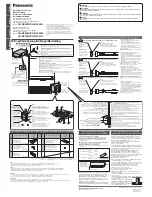
The receiver compares the incoming presentation time of each sample to the current time and buffers
the sample until the presentation time is has come.
The offset (
maximum transit time
) is specified by the AVB standard as 2 ms for class A traffic, which is
enough time for the signal to pass through a very large network under full load with up to seven 100
MBit/s switches along the way. By default, most AVB products will use this offset. In smaller networks
with less hops or 1 GBit/s link speed, the offset can be adjusted to lower values, such as 0.3 ms, 0.6 ms
or 1 ms. In the event that the chosen offset is too low, the listener detects that the requested
presentation time has already passed and the audio data is discarded.
The M-32 DA Pro acts both as a talker with a specified offset of 2 ms, adjustable down to 0.3 ms, and
as a listener - where the latency depends on the talker.
In AVB networks, the latency is always specified by the talker and guaranteed by the
listener - with nanosecond accuracy. This behavior is
plug and play
and does not require
any user interaction or monitoring.
5.4.1. Adjusting the network latency
The default presentation time offset of 2 ms for outgoing streams can be changed when lower
latencies are required.
Reducing the offset to a lower value can prevent audio to be played out depending on
the network.
This setting can only be accessed on the web remote.
To adjust the presentation time offset:
1. Connect the device by USB or network cable and open the web remote.
Section 8.5.1, “Finding the Device on a Network”
2. Open the
Settings
.
3. Activate
Expert Settings
.
4. Choose a new Presentation Time Offset in the drop down menu. It is immediately applied.
Changing the presentation time offset briefly interrupts all incoming and outgoing AVB
streams.
RME M-32 DA Pro User’s Guide
5.4. AVB Network Latency |
18
















































